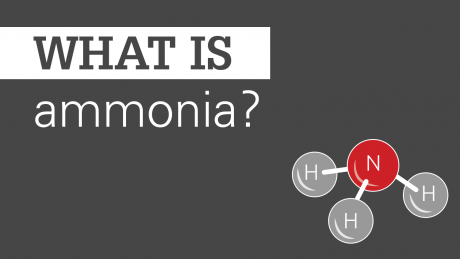



New ammonia research could improve human health and poultry production
The same research that can help humans suffering from liver disease(s) is also helping poultry producers put more meat on consumers’ tables
What’s the connection?
Ammonium, a positive ion formed from ammonia, and how it impacts the expression of myostatin, a key protein involved in muscle growth.
Ammonia and ammonium, what's the difference?
Ammonia is a chemical compound of nitrogen and hydrogen. It’s colorless, but it has a strong smell.
Ammonium is a positive ion formed when ammonia bonds with a proton. Ammonium is a kind of waste produced by animals.

Emily Miramontes, a North Carolina State Physiology graduate student, and researchers from NC State, Nicolaus Copernicus University in Torun, Poland, and Poznan University of Medical Sciences in Poland, just published new research in the International Journal of Molecular Sciences that could help others understand interactions between ammonia and skeletal muscle.
The article presents the current state of the research relevant to Miramontes’ wider project.
Paul Mozdziak and Jim Petitte, research faculty members in the Prestage Department of Poultry Science, are co-authors on the paper.
Beyond the findings themselves, this research illustrates that strong mentorship and strong research skills lead to strong futures.
Ammonia and the liver
In a person with a healthy liver, ammonia processed in the liver, removing it from the blood. From the liver, the processed ammonia is carried to the kidneys and eventually leaves the body in urine.
In a person with liver disease, ammonia can build up in the blood, causing a variety of problems. One of those problems is sarcopenia, or loss of skeletal muscle. Research from 2016 states that there are no effective ways to prevent or treat sarcopenia. And sarcopenia doesn’t improve, even with a liver transplant.
Ammonia and myostatin in different species
Previous research from Paul Mozdziak’s lab at NC State showed that mammalian and avian species differ in how ammonia effects myostatin expression and skeletal muscle growth.
In mammals, including humans, excess ammonia causes muscles to waste away. In birds, though, increased ammonia increases muscle mass. This was an important insight, since it was previously assumed that mammalian muscle response would be true for avian species, too. As Miramontes said, the previous findings “opened new doors to how that [ammonium impact] happens and how it could be applied.”
Building on the earlier research, Miramontes’ project added two things to the previous finding.
First, she looked at ammonia’s impact on fish myostatin expression and skeletal muscle growth.
Second, she did experiments to see if different levels of ammonia caused different responses in each species group.
When examining fish muscle, Miramontes found another way for ammonia to effect an animal: a non-impact. Tilapia muscle doesn’t respond to increased ammonia at all. There’s no wasting, and no extra growth. The ammonia doesn’t seem to have positive or negative consequences for muscle.
To get a clearer picture of how ammonia does or doesn’t impact myostatin expression and skeletal muscle, Miramontes designed her experiments with increasing amounts of ammonia. This let her see what, if any, differences, would emerge as ammonia increased. Those experimental findings were also submitted for publication and are currently under review.
Impacts and future research
Miramontes' findings could be a foundation for understanding how different species groups process ammonia. Understanding how avian species increase muscle with ammonia, or how fish species keep ammonia from impacting muscle at all, could lead to therapies to help people suffering from sarcopenia.
In addition, it’s possible that ammonia, once it’s understood better, could help poultry producers raise animals with more muscle, making more meat available to a growing world.
There are concerns, though. Ammonia doesn’t just effect skeletal muscle; it’s toxic to the body, whether mammal, bird or fish.
Having precise comparative data, like Miramontes et al.’s, is essential if researchers hope to fully understand ammonia and its full range of impacts.








